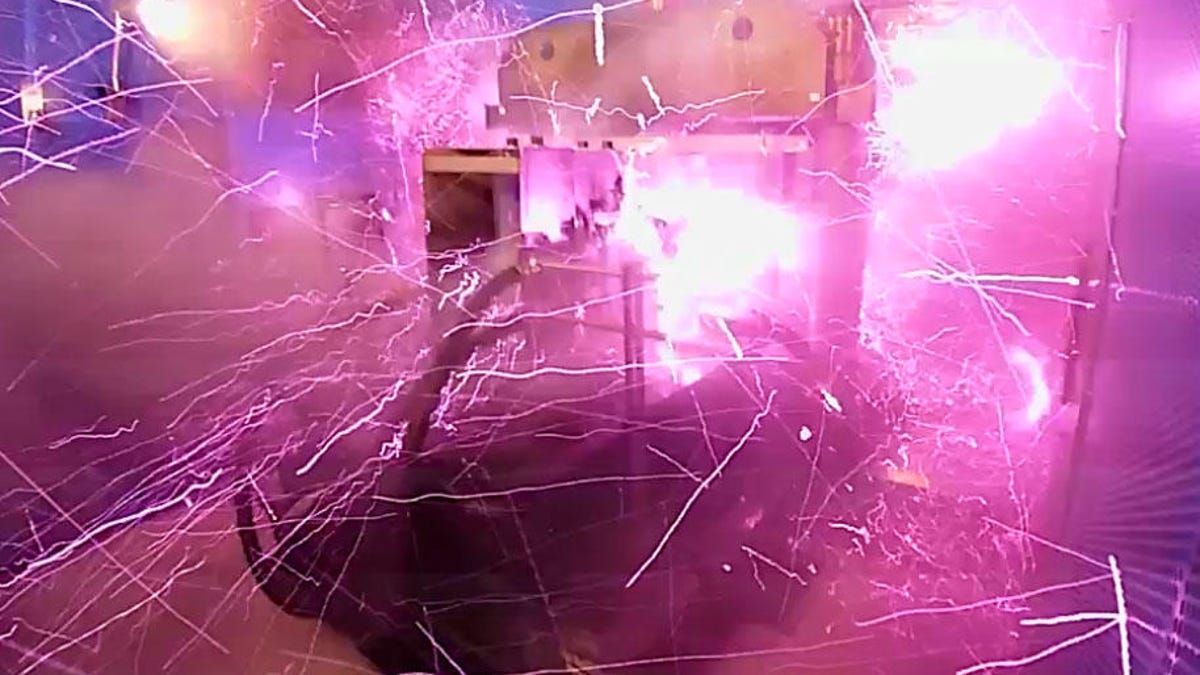Scientists create most powerful indoor magnetic field, blow up own lab
Watch as the newly built instrument goes BANG, after generating a magnetic field strength of 1,200 teslas.

If you're going to break a record, you might as well do it with an almighty bang.
In April, a research team at the University of Tokyo did just that: creating the world's strongest indoor magnetic field and blowing the door off their new, custom-built instrument. The research was published in Review of Scientific Instruments on Sept. 17.
This wasn't entirely unexpected, however. The scientists predicted that the instrument would explode, but they just hadn't predicted exactly how strong their magnetic field would be.
Magnetic field strength is measured in teslas (T) (named after Serbian-American inventor Nikola Tesla , of course, and nothing to do with Elon Musk ). In everyday life, you likely encounter teslas in the magnitude less than 3 T in loudspeakers and up to around 12 T in MRI machines. Interestingly enough, scientists once used a magnetic field of 16 T to levitate animals, such as frogs. Lead researcher, Shojiro Takeyama, told IEEE Spectrum that he had designed the new instrument's iron housing to withstand about 700 T, but the actual output was almost 42 percent stronger than expected, topping out at 1,200 T.
He hadn't prepared for that.
You can watch what happens in the video below:
To achieve the record, the team used a technique known as electromagnetic flux-compression (EMFC). They attached their instrument, which generates a low-strength, static magnetic field of 3.2 T, to a row of capacitors that generate a huge amount of energy -- 3.2 megajoules. This compresses the magnetic field into a tiny area at an alarmingly fast speed. But it can't stay compressed for long, eventually bouncing back and creating a shock wave that rips the instrument apart.
Fortunately, the explosion wasn't all for naught.
"With magnetic fields above 1,000 teslas, you open up some interesting possibilities," Takeyama explained. "You can observe the motion of electrons outside the material environments they are normally within. So we can study them in a whole new light and explore new kinds of electronic devices. This research could also be useful to those working on fusion power generation."
Fusion power is often seen as the holy grail of energy production, one that is safer and cleaner than burning fossil fuels, and generates huge amounts of energy through nuclear fusion reactions, like those that take place inside the Sun.
For Takeyama, it doesn't end here. He's looking to break the record again with a bigger, stronger magnetic field reaching 1,500 T.
Taking It to Extremes: Mix insane situations -- erupting volcanoes, nuclear meltdowns, 30-foot waves -- with everyday tech. Here's what happens.
Fight the Power: Take a look at who's transforming the way we think about energy.
Update 8:56 p.m.: Clarified fusion power, megajoule usage

